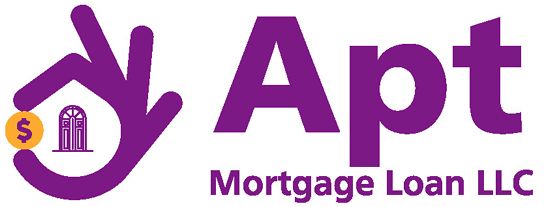FAQs
Apt Mortgage Loan LLC
What are your hours of operation?
Our office is open every day from 9:00 am to 9:00 pm to serve our customers' mortgage and loan needs.What loans do you offer?
We provide a range of loan options including conventional loans, FHA loans, jumbo loans, construction loans, DSCR loans, and HELOC loans.What states are you licensed in?
Apt Mortgage Loan is currently licensed to operate in Florida, Pennsylvania, Massachusetts, and Texas. We can help in several other states through our partners; feel free to call us to find out.What credit score is needed to qualify for a mortgage?
While requirements vary by loan type, a score of 620 or higher is typically needed for conventional loans. FHA loans may allow lower scores. The higher your score better the rates.Can I get pre-approved for a mortgage?
Absolutely. Pre-approval helps you understand your budget and strengthens your offer when buying a home. We will be happy to educate you on the different options you have.What documents do I need to apply for a mortgage?
Typically, you’ll need identification, a credit report, income verification (pay stubs, W-2s), and bank statements. Other documents may be required based on your scenario.
How much down payment is required?
Loan Type: Conventional (Fannie/ Freddie)
Min Down Payment: 3% (first-time buyer), 5% (repeat buyer)
Credit Score Requirement: 620+
Occupancy: Primary residence
Notes: 20% down avoids PMI; higher scores = lower PMI cost
Min Down Payment: 10%
Credit Score Requirement: 620+
Occupancy: Second home
Notes: Cannot use 3% option
Min Down Payment: 15% (1-unit), 25% (2–4 units)
Credit Score Requirement: 620+
Occupancy: Investment
Notes: Stricter LTV and reserves required
Loan Type: FHA
Min Down Payment: 3.5%
Credit Score Requirement: 580+
Occupancy: Primary residence only
Notes: Upfront + monthly MIP required regardless of down payment
Min Down Payment: 10%
Credit Score Requirement: 500–579
Occupancy: Primary residence only
Notes: Still subject to MIP
Explain the Mortgage Process
Here’s a high-level overview of the mortgage process in simple steps:
1. Pre-Approval
- You give a lender your income, credit, and asset documents.
- Lender checks your credit and debt-to-income ratio.
- You get a pre-approval letter showing how much you can borrow. (This helps you shop for homes confidently.)
2. House Hunting & Offer
- You work with a real estate agent to find a home.
- Make an offer; once accepted, you sign a purchase contract.
3. Loan Application
- You complete the formal application with your lender.
- Provide supporting documents (pay stubs, W-2s, bank statements, etc.).
4. Processing
- Lender orders appraisal (to verify home value).
- Title search is done (to ensure no legal issues with ownership).
- Insurance is arranged (homeowners, sometimes flood).
5. Underwriting
- Underwriter reviews your income, assets, credit, and the property.
- May ask for clarifications or more documents (called “conditions”).
6. Loan Approval & Closing Disclosure
- Once approved, the lender issues a Closing Disclosure (CD) with final numbers.
- By law (for consumer loans), you must receive it 3 business days before closing.
7. Closing
- You sign loan docs at the title/escrow office.
- Pay down payment + closing costs.
- Loan funds, and you get the keys.
That’s the big picture flow: Pre-Approval → Offer → Application → Processing → Underwriting → Closing.
How long does the mortgage approval process take?
On average, it takes about 30 days from application to closing, depending on your responsiveness and loan complexity. We have closed loans in as little as 10 days.
What do you charge for your services?
In most cases, our services come at no cost to you. We’re compensated by our lending partners, who compete for your business. We compare their offers to ensure you get the most competitive rates available.
How do you compare with your competitors?
We provide the lowest rates and closing costs, paired with exceptional service on every loan we handle. Few competitors can match us across all these areas.
Can I apply for a mortgage online?
Yes, our online application makes it easy to start the process from anywhere, at any time. Click on the Apply Now button to start. You can also upload all the required documents there.
When should I refinance?
Timing the market is tricky, with rates shifting every day due to economic and geopolitical factors. We generally consider a monthly savings of $250 ($3,000 a year) — a strong reason to refinance. In many cases, our clients have saved a lot more. Don’t delay your savings. The earlier you refinance, the more you keep in your pocket.
Can you help with a zero ($0) cost refinance?
Definitely — paying out-of-pocket for a refinance usually isn’t a smart move. We cover most, if not all, of the fees for your refinance. For example, if you paid $2,000 in fees to save $200 a month, it would take 10 months to break even. But if your costs are $0, your savings start the moment you close.
Do you recommend Rate Buydown?
It depends on market conditions. Buying down your interest rate makes sense when inflation is high and rates are expected to rise, but it’s usually not advisable in a declining-rate environment.
What is temporary buydown and do you offer that?
A temporary rate buydown is a mortgage feature that reduces your interest rate for the first few years of your loan, making your initial monthly payments lower than the standard rate.
Here’s how it works:
Key Points
1. Short-term reduction – Common buydowns are 3-2-1 or 2-1:
- 3-2-1 buydown: Year 1 = 3% below note rate, Year 2 = 2% below, Year 3 = 1% below, then returns to the full rate.
- 2-1 buydown: Year 1 = 2% below, Year 2 = 1% below, then normal rate.
2. Paid upfront – The cost of the buydown is usually paid by the borrower, seller, or builder at closing.
3. Purpose – Helps borrowers ease into payments, particularly useful when cash flow is tight at the start.
4. Not permanent – After the buydown period, the monthly payments rise to the full note rate.
Some of our lenders offer temporary rate buy-down products. We will share that with you based on your scenario.


